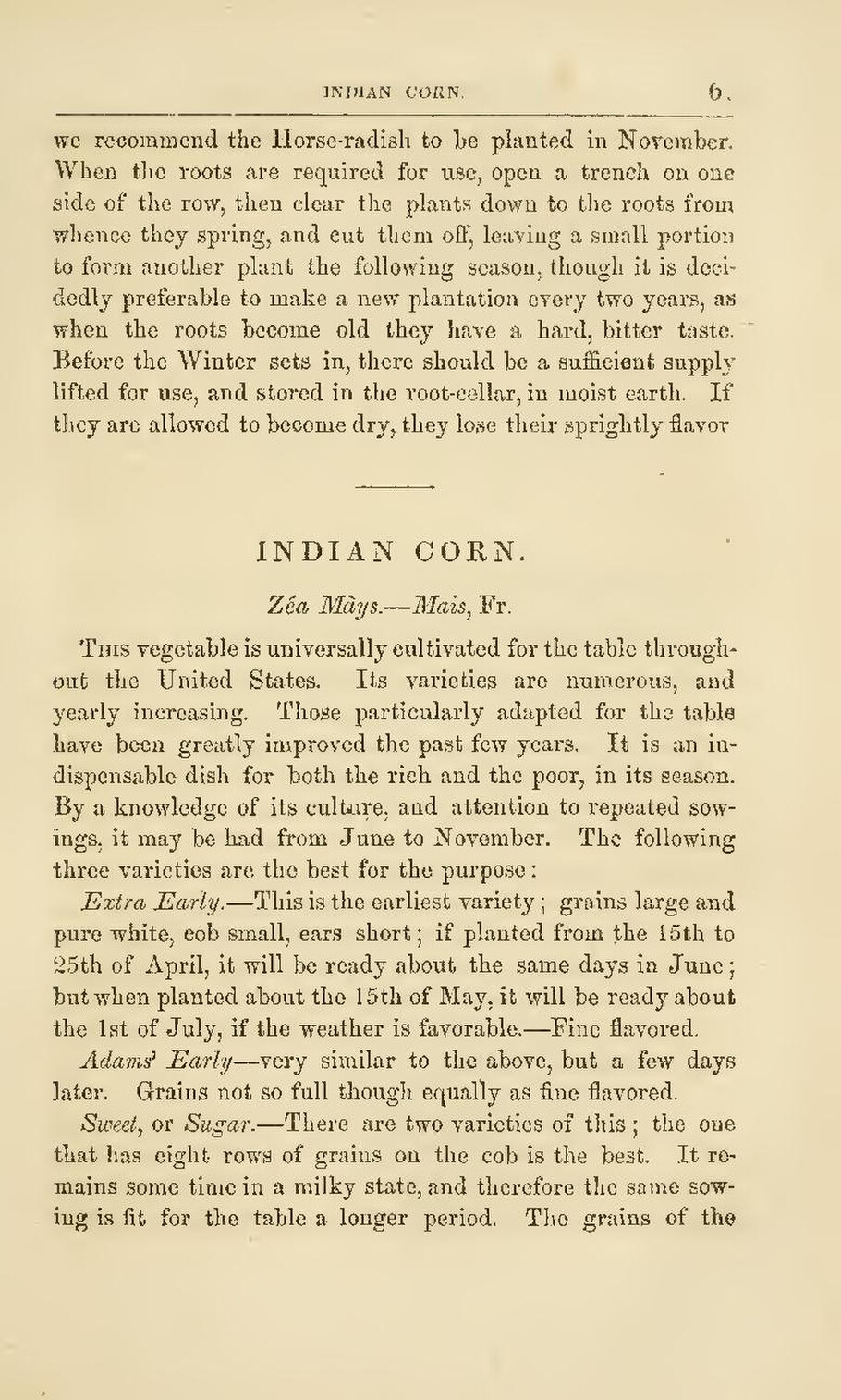we recommend the Horse-radish to be planted in November. When the roots are required for use, open a trench on one side of the row, then clear the plants down to the roots from whence they spring, and cut them off, leaving a small portion to form another plant the following season, though it is decidedly preferable to make a new plantation every two years, as when the roots become old they have a hard, bitter taste. Before the Winter sets in, there should be a sufficient supply lifted for use, and stored in the root-cellar, in moist earth. If they are allowed to become dry, they lose their sprightly flavor.
INDIAN CORN.
Zéa Màys.—Mais, Fr.
This vegetable is universally cultivated for the table throughout the United States. Its varieties are numerous, and yearly increasing. Those particularly adapted for the table have been greatly improved the past few years. It is an indispensable dish for both the rich and the poor, in its season. By a knowledge of its culture, and attention to repeated sowings, it may be had from June to November. The following three varieties are the best for the purpose:
Extra Early.—This is the earliest variety; grains large and pure white, cob small, ears short; if planted from the 15th to 25th of April, it will be ready about the same days in June; but when planted about the 15th of May, it will be ready about the 1st of July, if the weather is favorable.—Fine flavored.
Adams’ Early—very similar to the above, but a few days later. Grains not so full though equally as fine flavored.
Sweet, or Sugar.—There are two varieties of this; the one that has eight rows of grains on the cob is the best. It remains some time in a milky state, and therefore the same sowing is fit for the table a longer period. The grains of the
